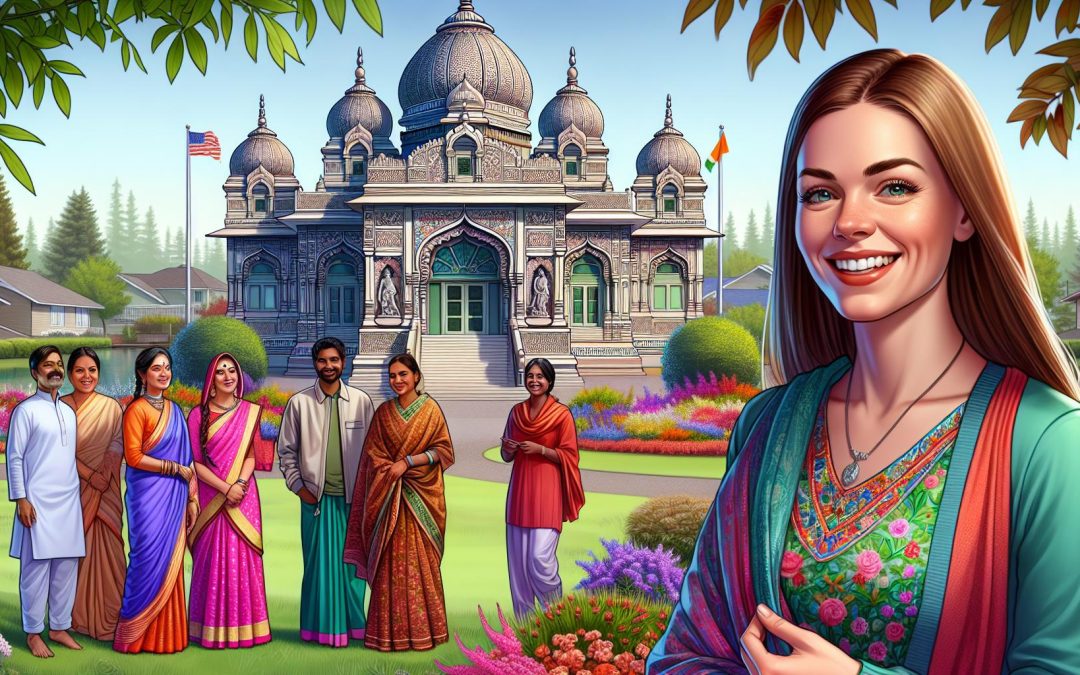Redmond’s community has always fascinated me with its rich tapestry of history and vibrant culture. Nestled in the heart of Washington, this charming town has grown from a modest settlement into a bustling hub of innovation and tradition. Walking through its streets, I can’t help but feel the stories of the past whisper through the modern facades.
From the early days of pioneering settlers to the tech boom that put Redmond on the map, each era has left its unique mark. It’s not just the landmarks and buildings that tell the tale but the people who’ve called this place home. Join me as we explore the captivating history of Redmond’s community, where every corner has a story and every story brings us closer to understanding this remarkable town.
Overview of Redmond’s Community
Redmond’s community offers a diverse mix of old and new, reflecting its rich history and swift technological growth. The early settlers, primarily loggers and farmers, laid the foundation for this vibrant town. Their hard work and dedication are visible in preserved landmarks like the Redmond Historical Society and The Old Redmond Schoolhouse, which stand as testaments to their enduring legacy.
In the 1970s, the tech industry began to reshape Redmond. With Microsoft establishing its headquarters in 1986, the town experienced a significant influx of tech professionals. This boom brought economic growth and cultural diversity, transforming Redmond into a global innovation center. Community initiatives like OneRedmond work to support local businesses, foster economic growth, and enhance the local quality of life.
Redmond’s community actively values education, with institutions like Lake Washington School District and DigiPen Institute of Technology providing excellent learning opportunities. These institutions ensure that the local workforce remains skilled and ready for the challenges of a tech-driven economy. This commitment to education reflects the town’s broader dedication to growth and innovation.
Parks and recreational facilities play a crucial role in community life. Redmond features over 47 parks, including Marymoor Park and Anderson Park, offering residents a variety of outdoor activities from hiking to sports. These green spaces provide a natural retreat and encourage a healthy, active lifestyle among residents.
Cultural diversity is another cornerstone of Redmond’s community. Events like Derby Days and the Redmond Lights festival celebrate this diversity, bringing together residents of various backgrounds. These events foster a sense of unity and community pride, making Redmond a welcoming place for everyone.
Neighborhoods in Redmond also exhibit unique characteristics, contributing to the town’s overall charm. Areas like Education Hill, Grass Lawn, and Downtown Redmond each offer distinct living experiences, with amenities catering to a range of lifestyles. This neighborhood variety ensures that Redmond remains an attractive place for both families and individuals.
Local organizations and volunteers play a significant role in maintaining the strong community spirit. Groups like Hopelink and the Redmond Rotary actively support community needs through various programs and services. Their efforts ensure that residents have access to essential resources and support networks.
Overall, Redmond’s community thrives on its blend of historical roots and modern advancements. Residents appreciate the balance between preserving the town’s heritage and embracing progress. This dynamic makes Redmond not just a place to live but a community to be a part of and to invest in.
Historical Background
Redmond’s history stretches back to the mid-19th century when settlers first arrived. The pioneering spirit of these early inhabitants laid the foundation for the vibrant community it is today.
Earliest Settlements
In the 1870s, Redmond’s fertile land attracted settlers drawn to farming and logging opportunities. Luke McRedmond, after whom the town is named, was one of the first to settle, establishing a homestead in 1871. Farmers and loggers built the initial economy. For example, they harvested the abundant timber and cultivated crops like wheat and hay. The establishment of a post office in 1881 formalized the settlement into a budding community. Influential early establishments included blacksmith shops and general stores, which provided essential services. By the early 1900s, Redmond’s growing population led to the construction of schools and churches, creating a close-knit community.
Key Historical Events
Several key events have defined Redmond’s trajectory. The town’s incorporation in 1912 marked a significant milestone. This formal recognition brought infrastructure improvements like roads and utilities. The arrival of railroads in the 1920s enhanced connectivity, boosting trade and commerce. Another pivotal moment came in the 1980s when Microsoft established its headquarters in Redmond. This spurred economic growth, transforming the town into a tech hub. Local efforts, like the founding of the Redmond Historical Society in 1999, have ensured that Redmond’s rich history is preserved for future generations. Consistent housing development and infrastructural expansions have shaped a dynamic and forward-thinking community.
People Who Shaped Redmond
Redmond is a community built by individuals who left lasting impacts in various fields. Some people influenced its development, while others enriched its culture.
Influential Figures
Several key figures have been instrumental in shaping Redmond’s growth. One notable person is Warren W. Perrigo, Redmond’s first mayor, who played a crucial role in the town’s incorporation in 1912. His leadership during the town’s early years provided a stable foundation for Redmond’s future development.
Bill Gates and Paul Allen, co-founders of Microsoft, drastically transformed Redmond’s landscape. In the 1980s, they chose Redmond as the headquarters for Microsoft, driving economic growth and attracting a diverse workforce to the city. Their decision placed Redmond on the map as a tech hub, fostering innovation and progress.
Ezekiel “Zeke” Williamson was another significant figure. He was instrumental in establishing the Redmond Fire Department, enhancing the town’s safety and community services. Zeke’s efforts ensured residents had reliable emergency services, boosting both safety and trust within the community.
Cultural Contributors
Redmond’s rich cultural tapestry owes much to individuals who nurtured arts, education, and community spirit. Jessie P. Kennedy, an early educator, left a lasting legacy by founding the first school in Redmond. Her dedication to education laid the foundation for the high value Redmond places on learning, evident in institutions like the Lake Washington School District.
Valerie Wonder spearheaded cultural initiatives, such as the creation of the Redmond Historical Society. Her work in preserving Redmond’s history ensures future generations appreciate the town’s heritage. Valerie’s contributions include Archiving historical documents, organizing educational events, and advocating for the preservation of historical sites.
Matt Pinka, founder of the Redmond Arts Festival, brought the community together through the arts. Held annually, the festival showcases local artists and performers’ talents, celebrating Redmond’s cultural diversity. This event has become a staple in the community, fostering unity and promoting local talent.
These individuals, among others, contributed to shaping Redmond’s unique character, making it a vibrant place to live and work.
Notable Places in Redmond’s Community
Redmond, Washington, boasts a variety of distinctive locations that showcase both its historical roots and modern innovations. Each place in Redmond’s community tells a unique story, reflecting the town’s rich heritage and forward-thinking spirit.
Historic Landmarks
Redmond’s historical landmarks offer glimpses into the town’s past and the lives of its pioneering settlers. The Old Redmond Schoolhouse stands as a reminder of Redmond’s commitment to education. Built in 1922, this structure originally served as the town’s first official school and now hosts various community activities.
The Redmond Historical Society is another cornerstone of the town’s heritage. Founded in 1999 by Valerie Wonder, this organization preserves and shares Redmond’s history through exhibits, archives, and public events. Their collection includes artifacts and photographs that provide insight into the town’s development.
The Anderson Park, Redmond’s first park established in 1928, remains a cherished spot. Named after homesteader Luke McRedmond Anderson, the park features rustic log cabins and lush green spaces. It’s a popular site for weddings, community gatherings, and picnics, encapsulating the town’s rustic charm.
Finally, the Redmond Firehouse Station No. 1 marks innovation in community safety. Established by Ezekiel “Zeke” Williamson, this historic firehouse symbolizes Redmond’s growth and commitment to public safety as it transitioned from a rural settlement to a bustling suburban community.
Modern Attractions
Modern attractions in Redmond reflect its evolution into a tech-driven, culturally diverse area. The Microsoft Campus is perhaps the most iconic modern landmark. Since its establishment in the 1980s by Bill Gates and Paul Allen, Microsoft’s sprawling headquarters has significantly impacted Redmond’s economy and global recognition.
Redmond Town Center offers a vibrant mix of shopping, dining, and entertainment options. Opened in the late 1990s, this outdoor mall features over 110 stores and restaurants, becoming a central hub for social life and commerce.
Nature lovers frequent Marymoor Park, King County’s largest and most popular park. Spanning 640 acres, it provides various amenities, such as sports fields, a climbing wall, off-leash dog areas, and the famous Summer Concerts at Marymoor. This park epitomizes Redmond’s dedication to active lifestyles and outdoor recreation.
For a touch of culture, Redmond Arts Festival showcases the work of local artists each year. Founded by Matt Pinka, this festival highlights Redmond’s thriving arts scene and fosters community unity through diverse artistic expressions. Attendees enjoy live music, food vendors, and interactive art exhibits.
These notable places highlight the blend of history and modernity that defines Redmond, making it a unique and engaging community.
Redmond’s Community Today
Current Demographics
Redmond’s community today exemplifies a diverse and dynamic population. According to the most recent census data, the city’s population stands at approximately 72,000 residents. The community boasts a mix of families, young professionals, and retirees, reflecting the area’s appeal to various age groups.
Ethnic diversity is a hallmark of Redmond’s population. About 45% of residents identify as White, 38% as Asian, 8% as Hispanic or Latino, and 6% as African American. This rich cultural tapestry is evident in local events and the variety of cultural organizations active in the area.
The median age in Redmond is 34 years, highlighting a relatively young community enriched by professionals in the tech industry, primarily due to the presence of companies like Microsoft and Nintendo. Additionally, nearly 60% of adults in Redmond hold a bachelor’s degree or higher, signifying a highly educated population. The city’s thriving economy and quality educational institutions continually attract talented individuals from across the globe, contributing to Redmond’s growth and vibrancy.
Community Initiatives
Community initiatives play a crucial role in maintaining Redmond’s inclusive and vibrant atmosphere. The OneRedmond organization stands out, supporting local businesses through networking events, resources, and advocacy. OneRedmond offers everything from small business grants to workforce development programs, helping local enterprises thrive.
Environmental sustainability initiatives are also prominent. Local programs like the Green Redmond Partnership focus on preserving natural spaces by mobilizing volunteers to restore forests and plant native species. This enhances the quality of life and showcases the community’s commitment to environmental stewardship.
Redmond’s community spirit shines through in its focus on arts and culture. The Redmond Arts Festival, for example, is an annual event that brings together artists, residents, and visitors. It fosters a sense of community while celebrating creativity.
Volunteer organizations further enrich community life. Groups like the Redmond Senior Center and Hopelink provide essential services, whether it’s fostering social engagement among seniors or offering support to those in need. These initiatives collectively ensure that Redmond remains a welcoming and supportive community for all its residents.
Conclusion
Exploring Redmond’s history has given me a deep appreciation for its unique blend of past and present. The stories of pioneering settlers and tech innovators alike show how this community has evolved while maintaining its rich heritage.
Redmond’s diverse population, vibrant cultural events, and commitment to education and sustainability make it a special place. I hope you feel inspired to uncover the stories behind every corner of this dynamic town.
Whether you’re a resident or a visitor, there’s always something new to discover in Redmond.





0 Comments